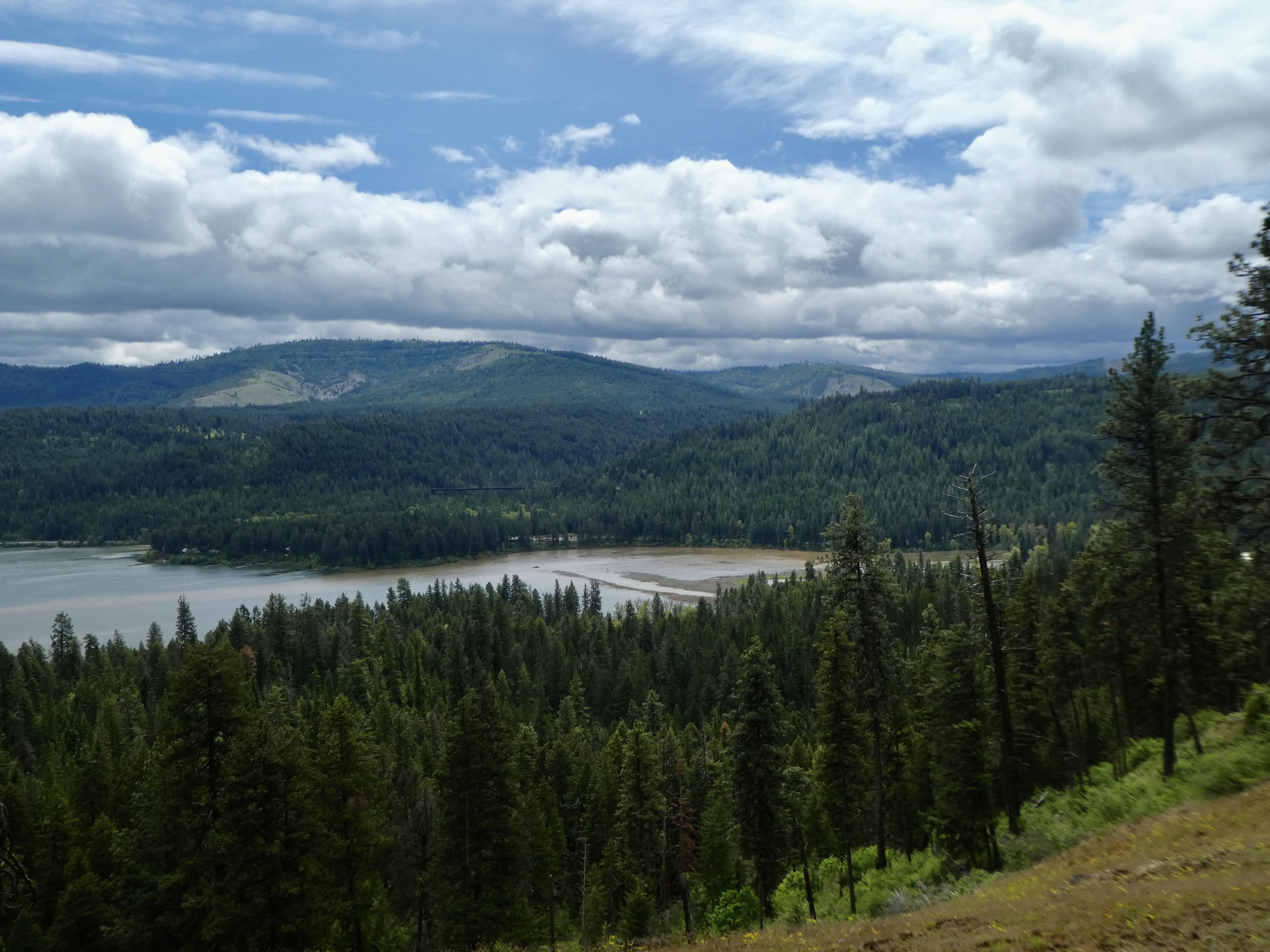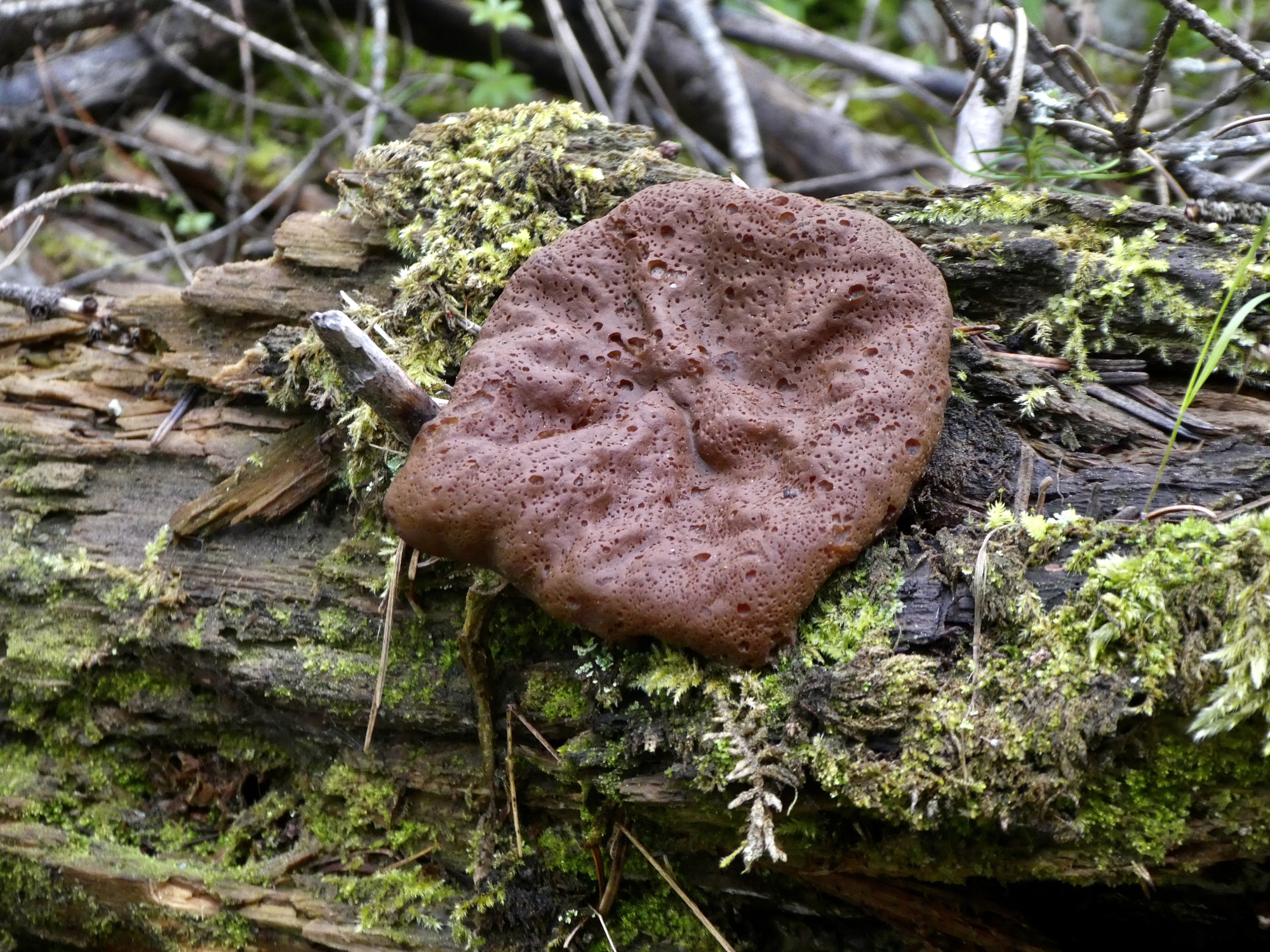May 22, 2020
Heyburn State Park
Yesterday was chilly and windy, and today is even colder. Also wetter, with rain due to arrive around one this afternoon. Biking doesn’t sound appealing, so we decide to take a hike. We go out separately, exploring the state park that surrounds us at our own pace. We both hike the short CCC Nature Trail, and the larger Indian Cliffs Trail that encircles it. I hike something like 6 or 7 miles, but Rocky of course covers considerably more ground: 11.5 miles, and over 2,000’ of climbing. She even walks most of the Indian Cliffs Trail twice, so she can enjoy the views from the top in both directions.
I won’t say anything else about the hike itself, other than through the photos. I thought I’d say a bit about the park itself though, as well as the south end of the lake that we’ve been living by for the last two weeks. It has a surprisingly interesting history.
The Coeur d’Alene Tribe are the native people of this region, having lived here for thousands of years before the arrival of fur traders, prospectors and settlers who overran their homeland. Their name was given by the French fur traders: Coeur d’Alene in French means “Heart of the Awl”, referring to the sharpness of the trading skills exhibited by tribal members in their dealings with visitors. In their ancient tribal language, members call themselves, “Schitsu’umsh,” meaning “The Discovered People” or “Those Who Are Found Here.”
In 1873, President Grant established by decree the Coeur d’Alene Reservation, granting the tribe a greatly reduced homeland of roughly 600,000 acres. Over the succeeding decades the boundaries were significantly reduced further through a series of acquisitions, reducing it to 345,000 acres. One of the reductions was to establish Heyburn State Park. The park was established in 1908 by President Taft and named for Weldon Heyburn, U.S. Senator from Idaho. Heyburn’s original aspiration was for the area to be established as a national park, a designation that was passed in the senate but failed in the house. Interestingly, it is the oldest state park in the Pacific Northwest.
The history of this end of the lake is also interesting. When we arrived, I puzzled at first over why the adjacent water is called Chatcolet Lake, since it’s just part of Coeur d’Alene Lake. This is because it originally was a separate lake, one of a cluster around the mouth of the Saint Joe River that merged when the level of Coeur d’Alene Lake rose after its outlet was dammed At Post Falls.
Also, I puzzled about the name Chatcolet at first, thinking it must be French. Apparently not though. It’s believed to come from the ancestral language of the Coeur d’Alenes: chatq’ele was their word for lake.
Enough background. Let’s look at the park.

| Heart | 2 | Comment | 0 | Link |

| Heart | 4 | Comment | 1 | Link |
4 years ago

| Heart | 4 | Comment | 2 | Link |
4 years ago

| Heart | 2 | Comment | 0 | Link |

| Heart | 4 | Comment | 1 | Link |
4 years ago

| Heart | 3 | Comment | 4 | Link |
4 years ago
4 years ago
https://youtu.be/1S2wjSvX2D8
4 years ago
4 years ago

| Heart | 2 | Comment | 0 | Link |

| Heart | 2 | Comment | 0 | Link |

| Heart | 3 | Comment | 2 | Link |
4 years ago

| Heart | 3 | Comment | 4 | Link |
4 years ago
https://wildflowersearch.org/search?oldstate=gms%3A4%3Bgmc%3A46.387%2C-117.763%3Blocation%3A366+McGee+Rd%2C+Pomeroy%2C+WA+99347%2C+USA%3Belev%3A2780%3B%3Bcat%3AL&buttonName=none&hab=&Elev=&PlantName=
4 years ago

| Heart | 1 | Comment | 0 | Link |

| Heart | 3 | Comment | 0 | Link |

| Heart | 2 | Comment | 0 | Link |

| Heart | 3 | Comment | 2 | Link |
4 years ago

| Heart | 4 | Comment | 2 | Link |
http://biology.burke.washington.edu/herbarium/imagecollection/taxon.php?Taxon=Delphinium%20nuttallianum
Upper pale one might be Douglas’ Brodiaea.
http://wildflowersbydonna.com/?page_id=3113
4 years ago
4 years ago

| Heart | 2 | Comment | 0 | Link |

| Heart | 3 | Comment | 2 | Link |
4 years ago

| Heart | 2 | Comment | 1 | Link |
4 years ago

| Heart | 2 | Comment | 3 | Link |

| Heart | 3 | Comment | 0 | Link |

| Heart | 3 | Comment | 5 | Link |
4 years ago
http://biology.burke.washington.edu/herbarium/imagecollection/taxon.php?Taxon=Frasera%20fastigiata
4 years ago
4 years ago
4 years ago

| Heart | 3 | Comment | 6 | Link |
What a fascinatingly biodiverse outing!
4 years ago
4 years ago
4 years ago
4 years ago
4 years ago
| Rate this entry's writing | Heart | 8 |
| Comment on this entry | Comment | 1 |

